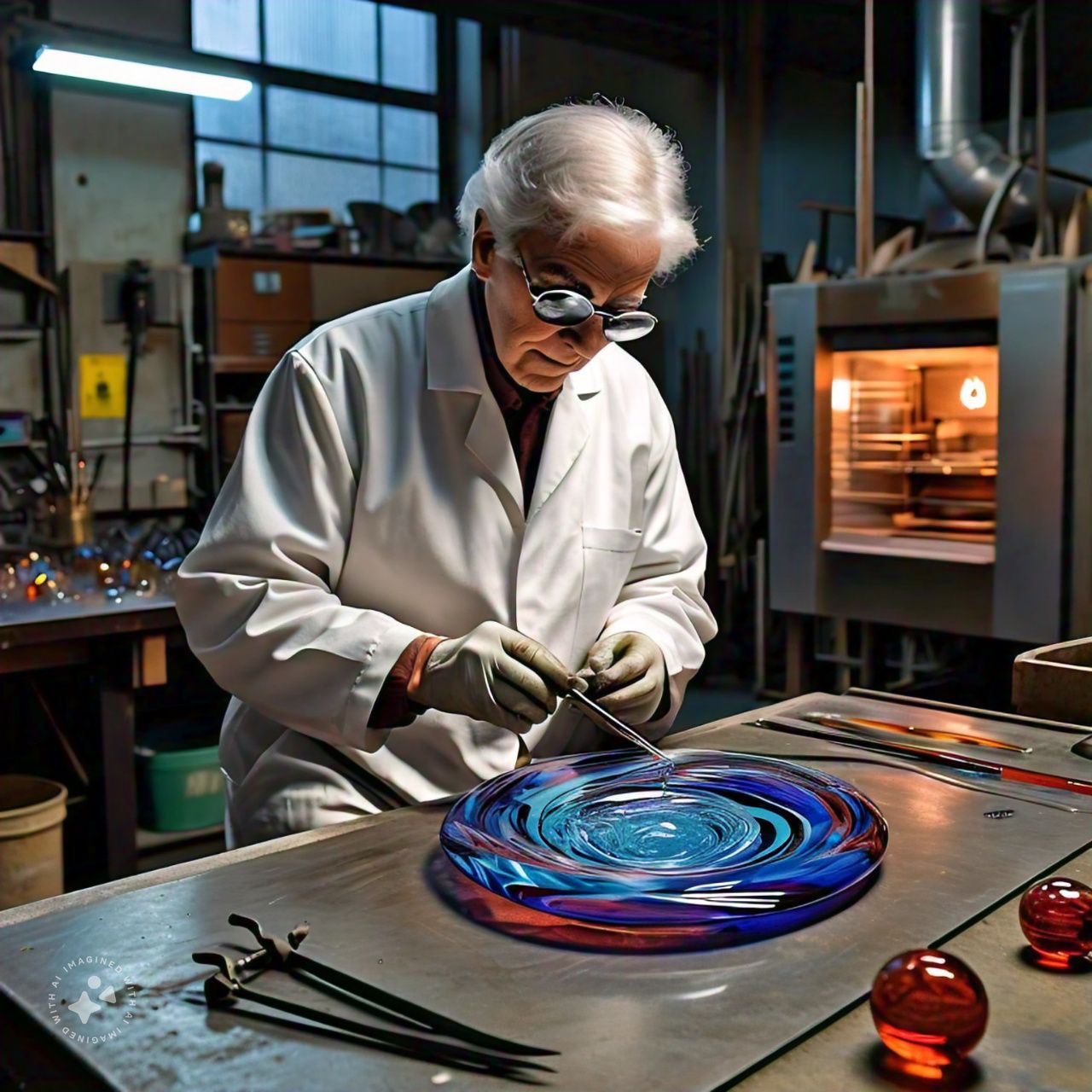LATEST_BLOGS
Illuminating Creativity: Exploring Dichroic Borosilicate Glass

Dichroic borosilicate glass is a mesmerizing material that combines the beauty of dichroic glass with the durability and versatility of borosilicate glass.
With its vibrant colors, reflective properties, and exceptional strength, dichroic borosilicate glass has become a favorite among glass artists, designers, and enthusiasts.
In this comprehensive guide, we’ll delve into the fascinating world of dichroic borosilicate glass, exploring its origins, characteristics, applications, and techniques for working with this unique material.
Understanding Dichroic Borosilicate Glass
The Fusion of Dichroic and Borosilicate Glass
Dichroic borosilicate glass is created by fusing layers of dichroic glass onto borosilicate glass substrates.
Borosilicate glass, known for its exceptional strength and thermal resistance, serves as the base material, providing stability and durability to the finished product.
The addition of dichroic coatings adds a dazzling array of colors and reflective properties, resulting in a truly captivating material that is both functional and decorative.
Characteristics of Dichroic Borosilicate Glass
Dichroic borosilicate glass exhibits a unique combination of properties that make it ideal for a wide range of applications:
- Vibrant Colors: Dichroic coatings impart vibrant, iridescent colors to the glass, ranging from fiery reds and oranges to cool blues and greens. These colors shift and change depending on the angle of observation, creating dynamic and ever-changing effects.
- Reflective Properties: Dichroic borosilicate glass reflects light in a way that is both mesmerizing and captivating. The glass appears to shimmer and sparkle as light passes through it, adding depth and dimension to any application.
- Durability: Borosilicate glass is known for its exceptional strength and thermal resistance, making it highly durable and resistant to breakage. Dichroic borosilicate glass retains these properties, making it suitable for both functional and decorative purposes.
- Versatility: From jewelry and sculpture to architectural elements and lighting fixtures, dichroic borosilicate glass can be used in a wide range of applications. Its versatility allows artists and designers to explore new creative possibilities and push the boundaries of glass artistry.
Applications of Dichroic Borosilicate Glass
Art and Sculpture
Dichroic borosilicate glass is a popular choice among glass artists for creating jewelry, sculptures, and decorative objects. The vibrant colors and reflective properties of dichroic glass add depth and dimension to sculptures, while the durability of borosilicate glass ensures that the finished pieces are strong and resilient.
Functional Glassware
In addition to its artistic applications, dichroic borosilicate glass is also used to create functional glassware such as drinking glasses, vases, and bowls. The durability of borosilicate glass makes it ideal for everyday use, while the vibrant colors and reflective properties of dichroic coatings add a touch of elegance and sophistication to the finished products.
Architectural Elements
Dichroic borosilicate glass is increasingly being used in architectural applications to create stunning facades, partitions, and interior elements. The vibrant colors and reflective properties of dichroic glass can transform ordinary buildings into works of art, while the durability of borosilicate glass ensures that the structures are strong and long-lasting.
Lighting Fixtures
Dichroic borosilicate glass is also popular in the design of lighting fixtures, including pendant lights, chandeliers, and sconces. The reflective properties of dichroic glass create a beautiful interplay of light and color, adding warmth and ambiance to any space.
Techniques for Working with Dichroic Borosilicate Glass
Glassblowing
Glassblowing is a traditional technique used to shape molten glass into various forms, including vessels, sculptures, and ornaments. Dichroic borosilicate glass can be incorporated into glassblowing projects to add vibrant colors and reflective accents to the finished pieces.
Kiln-Forming
Kiln-forming techniques involve heating glass in a kiln until it reaches a molten state and then shaping it into desired forms. Dichroic borosilicate glass can be used in kiln-forming projects to create fused glass panels, tiles, and architectural elements with vibrant colors and reflective properties.
Coldworking
Coldworking techniques such as cutting, grinding, and polishing can be used to shape and finish dichroic borosilicate glass pieces. These techniques allow artists to achieve precise shapes and smooth surfaces, enhancing the overall appearance of the finished artwork.
Laminating
Laminating involves bonding multiple layers of glass together to create laminated glass panels with enhanced strength and durability. Dichroic borosilicate glass can be laminated with other types of glass to create custom designs and patterns with vibrant colors and reflective properties.
Tips for Working with Dichroic Borosilicate Glass
Experiment with Different Techniques
Don’t be afraid to experiment with different techniques and methods for working with dichroic borosilicate glass. Explore glassblowing, kiln-forming, coldworking, and laminating to discover new creative possibilities and push the boundaries of glass artistry.
Take Your Time
Working with dichroic borosilicate glass requires patience and precision. Take your time and work slowly, especially when shaping and finishing the glass pieces. Rushing can lead to mistakes and compromise the quality of the finished artwork.
Protect Your Eyes and Skin
When working with dichroic borosilicate glass, it’s important to protect your eyes and skin from potential hazards. Wear safety glasses, gloves, and protective clothing to prevent injuries from glass shards, dust, and fumes.
Use Proper Ventilation
Ensure adequate ventilation in your workspace when working with dichroic borosilicate glass to minimize exposure to harmful fumes and gases. Work in a well-ventilated area or use a fume extraction system to remove contaminants from the air.
Have Fun!
Above all, have fun with your dichroic borosilicate glass projects! Let your creativity flow and enjoy the process of bringing your artistic visions to life in vibrant colors and reflective beauty.
Conclusion
Dichroic borosilicate glass offers a captivating combination of vibrant colors, reflective properties, and exceptional durability that has made it a favorite among glass artists, designers, and enthusiasts. Whether used in jewelry, sculpture, architecture, or lighting, dichroic borosilicate glass adds a touch of elegance and sophistication to any application. By understanding its characteristics, applications, and techniques for working with this unique material, artists can unlock endless creative possibilities and bring their artistic visions to life in dazzling color and style. So gather your supplies, unleash your creativity, and explore the mesmerizing world of dichroic borosilicate glass today!
Stay ahead of the curve with the freshest news updates by exploring TodayFirstMagazine!







